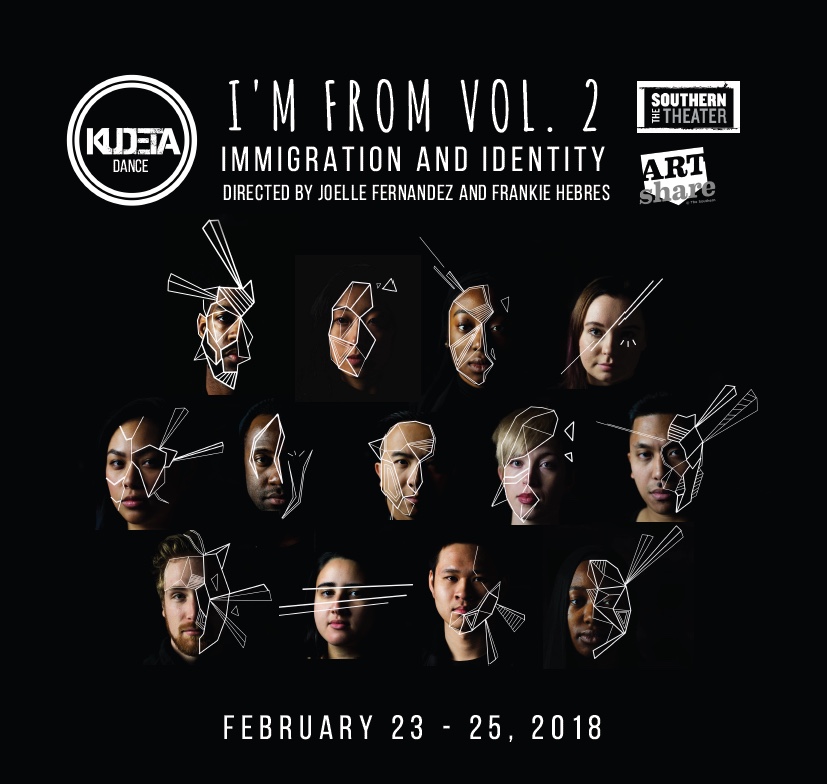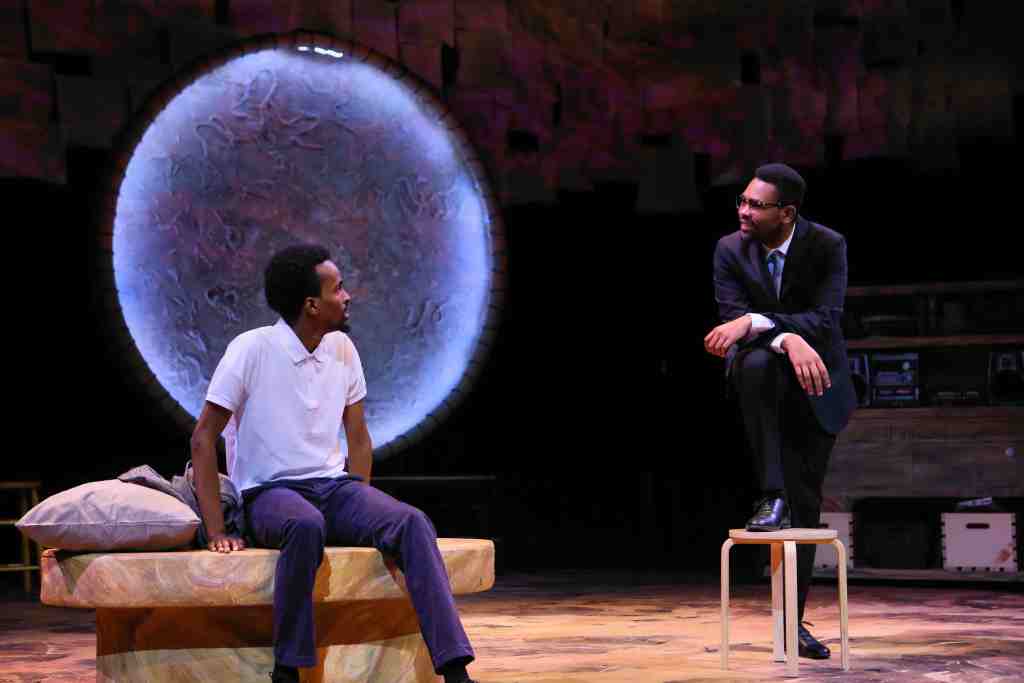Telling Your Story
Hero image by ET1972/Fotolia
As you read the missions of many Twin Cities performing arts companies, a common thread emerges: They want to tell narratives that are overlooked; they want to give a voice to the underrepresented; and they want to show how art is not only a means for social justice and understanding, but a catalyst for it. By and large, these artists succeed, whether it’s through historical reflections or not-so-removed worlds.
In the month of February, two performing art groups will make this connection through their own personal stories. Starting Feb. 10 through March 4, Minnesota History Theatre is putting on the world premiere of “A Crack in the Sky,” a mosaic of memories and folk tales from author Ahmed Ismail Yusuf and playwright Harrison David Rivers of Yusuf’s journey from being a shepherd boy in Somalia to being an author in Minnesota.
Halfway through the show’s run, over on the west side of the Mississippi River, urban dance crew Kudeta will present “I’m From Vol. 2: Immigration and Identity,” also a world premiere, from Feb. 23-25. Both productions are based on personal stories but are executed in very different ways.
A Look in the Mirror
An old adage for creative writing is to “write what you know.” But even then, writing what you know and writing your story are two different things.
“It’s so scary putting yourself out there to people you may not know,” says Joëlle Fernandez, co-founder of Kudeta and co-director of “I’m From Vol. 2.” “But I think it’s even scarier to face it yourself because through the process of creating our individual pieces, we really have to think and be in our feelings a lot.”
Since Kudeta’s first installment of “I’m From” about a year and a half ago, “Vol. 2” is pared down. Instead of about 30 artists, including children, they are working with 13. While some of “Vol. 1”’s dances focused on swathes of exodus and historical movements, this time Fernandez and her partner, Kudeta co-founder and co-director Frankie Herbres, are asking the question on an individual level. It’s not about street addresses or passport stamps. It’s about, for instance, being from “soy sauce and vinegar lighting up the house when you get home,” says Fernandez.
For Fernandez, answering where she’s from requires not shying away from the sacrifices her parents made for her. “My parents came here to give me a head start, and I used that head start to do what, hip hop? It’s the question of if what I’m doing is good enough,” she says.
Fernandez’s individual piece will be influenced by the Filipino traditional dance “binasuan,” where she has to balance cups filled with water on her head and hands as she dances. Historically, binasuan is performed in times of celebration. As the binasuan dancers turn, spin and roll to upbeat music, people watch in awe at the seemingly effortless way they balance the cups, never letting them spill. However, it is that skill, that unspoken limitation the cups impose, that Fernandez uses to draw a parallel to how the guilt she has about pursuing her love of dance burdens and limits her life.
Unlike most dance performances where you might get an artist’s note about the dance’s significance, there will be more than a vague explanation from Fernandez. She’s going to tell you her story through spoken word, too, as will the other nine dancers of the night.
“Our artistic vision is to be raw, clear, upfront, explicit, and so even if I danced everything I wanted to dance, the audience will still walk away with their own interpretation,” Fernandez says. “In my piece with the cups, that could mean anything. But if I have spoken word incorporated with it, it helps make it even clearer.”
 Sam Harper FusedXPhotography
Sam Harper FusedXPhotography Whose Story Is It?
While Fernandez’s story is unique to her, there is always a question of representation. If Fernandez is the only Filippino that someone knows, will they see her story as universal to every Filippino in a similar situation? Part of the power of telling personal stories is the realization that everyone’s stories aren’t as different or as foreign as they may seem, but that there is a fine balance between the individual and the collective.
To try to define that convergence, Kudeta’s approach is vulnerable honesty, which means a long, hard look at who each member is. Each solo piece has been created without input from Fernandez or Hebres, and because of that, it’s up to the dancer to dive into what makes them who they are, including what they don’t know about themselves.
With “A Crack in the Sky,” Yusuf and Rivers create a story that fully lives in the epicenter of the individual and the collective coming together. While the play incorporates much of Yusuf’s journey to the United States, Rivers thought to intertwine Somali folk tales into the narrative, and the pair had to pick which moments of Yusuf’s life to highlight and which timelines might have to change to fit the stage medium the best.
“I did a bit of research (on Somalia) just so that I could understand the broad strokes of Somali history and get a sense of the place Ahmed is from,” says Rivers, who has upcoming plays at Penumbra and Theater Latté Da as well. “But because we were telling Ahmed’s specific story, I relied on him to provide his perspective on the places and the people. … A different character or a different person with a similar story might remember different details, but I really wanted to adhere to Ahmed’s real story as possible.”
For months, Yusuf would write down his story for Harrison, who would ask what Yusuf describes as “illuminating” questions, and eventually those stories made up the script that balances Yusuf’s storytelling with Rivers’ masterful play creation.
Just as Kudeta’s dancers have to contend with the forces that have influenced them, Yusuf has to reflect on how he has become who he is. Before he came to the theater, he says he was not ready to tell it, but when he started, he says, “There was no second-guessing what to say or what to tell or why.” His story is infused with gratitude toward the communities that have made him who he is, and he has a large place in his heart for the teachers who have reached out to him and fundamentally changed how he viewed life.
Even though “A Crack in the Sky” is based on Yusuf’s journey, he doesn’t see it as a play about him. “It’s actually a shared story; it is a communal story,” he says. “I wanted a story that is not only about me but about humanity in general and about a world that I left behind that has stayed with me and the world that I live.”
 Minnesota History Theatre
Minnesota History Theatre Coming Together
The performing arts, theater in particular, are an animal. At least according to Yusuf. “(Writing) is you and the page, but then you have to think of the audience, of the language of you’re using. You are thinking about the actors, the stage, a million other things that matter,” he says. “It is an animal, somehow or another, and you don’t seem to know where it leads.”
But then, as everyone who has been in theater knows, that can be the beauty of it. The shared story that Yusuf wanted to impart to his audience also soaks into the cast and crew who put the show on. The group numbers that Kudeta intermixes in between the solo pieces remind them they aren’t alone.
Like many shows that examine the world in all of its imperfections, “I’m From Vol. 2” ends on a hopeful note. Although I cannot confirm “A Crack in the Sky” does, my hunch is that it, too, will end with a sense of a new beginning.
Skipping past messy questions, unresolved issues and bittersweet memories and going straight to the positive feelings that smiling curtain calls can impart would certainly make for a lighter toll on the creators. However, whether you’re in the audience or on the stage, to not think about who you really are underneath your shield of skin and social media and personas is to live in a world without trying to see it or understand how you can fit in it. Likewise, ignoring the experiences of those around you is to fail to appreciate what makes up our personal stories—no matter how tangled and incomplete they are—and how those experiences can unite and define us.
“When I was a youth,” Fernandez says, “I went to UC Berkely for a youth leadership retreat, and something I learned was how to tell your own story because if we don’t know our own stories, and if we don’t speak on it, someone else will. Someone else will tell us who we are.”
Do you know who you are?
Need some more insider info?
The writers at Visit Twin Cities are here to answer any questions you're still left with as a visitor or potential visitor to the Minneapolis-St. Paul metro region. Click below to send us a message, and we'll get back to you as soon as possible!
